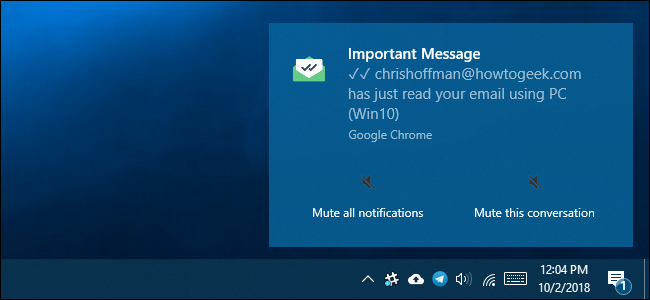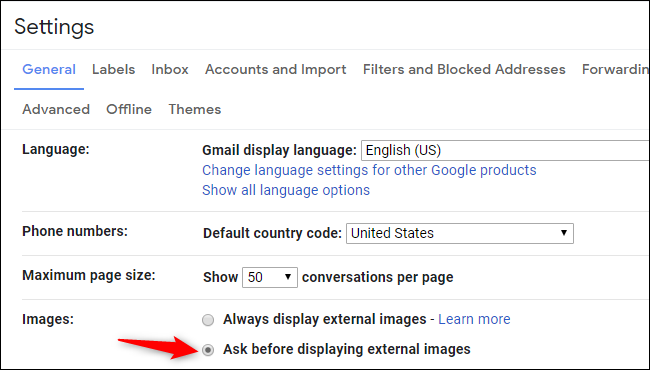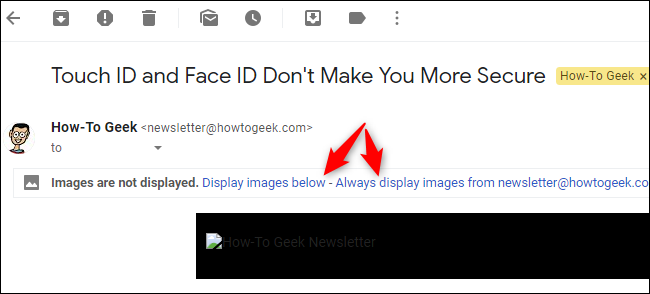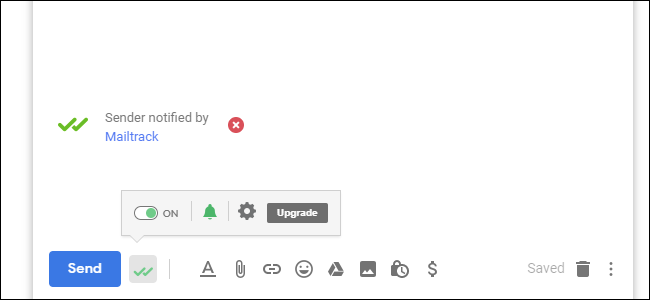Quick Links
Practically every email message you receive from a company has a tracker in it. The sender gets a ping when you open the message. You can block this trick---or use it yourself to track your messages.
How Are Emails Tracked?
In theory, email is a very simple medium. But you're not just sending a text message to someone---emails can contain HTML code, like on web pages. They can also load images, which is how the tracking works.
When you open an email, your email client loads the images in that email from the remote server and displays them, just as when you open a web page. You can tell your email client never to load images if you want. But they usually load images by default.
Companies that send email newsletters and other automated emails almost always include a special tracking image. This is a tiny invisible image file that's only a single pixel in size, also known as a 1x1 image. Each person who receives a copy of the email newsletter has a unique tracking image address in it. These images are also known as "web beacons."
When you open the email newsletter, and it loads images (even if you can't see any images), it loads an image with a unique address. When that specific image is loaded from the company's servers, they know the email sent to your email address was just opened.
There are other ways to track that you might have opened an email, too. For example, each link in the email may have a unique identifier that's tied to you so a company can see who clicked the links in the email. But this only happens when you actually click a link, not just open an email.
Why Are People Tracking Email Opens?
There's generally nothing sinister about this type of tracking. It happens all the time. Companies that send out automated email newsletters like to know how many people are opening and reading them.
Everyone does this. Here at How-To Geek, we've used this type of tracking for our email newsletter to ensure that we're only sending it to people who like looking at it. If a person never opens or interacts with our newsletter, we can remove them from the email list and stop sending it to them.
While this technique is used by companies, you can use it yourself. For example, let's say you're sending out a resume and you want to know who opened your job application emails. You can use software that embeds tracking images and reports to you when someone opens it, and you'll know who looked at it.
Email Open Tracking Often Doesn't Work
This isn't a perfect system. In fact, it's very messy. This email-opening tracking system can break in many ways.
If the recipient is using an email client that's set not to load images, the tracker won't load, and you'll have no way of knowing if that person looked at the email. This is also true if the recipient is using software that blocks these tracking images.
Some software along the way might load the tracking image for some reason---for example, to provide a preview of the email or to scan everything in it. You may get a ping that the email was viewed even if the recipient never opened it.
Some enterprise email systems may even block all incoming emails with tracking images or links.
While it's a messy and imperfect solution, it's the only one the industry has, so people still use it.
Microsoft Outlook does have a "read receipt" feature, but it's easy for people to decline to send read receipts. Gmail has a "read receipt" feature, but it's only available for G Suite (organization) accounts. Tracking images are like read receipts that silently work in any email client that loads images.
How to Block Email Open Tracking
If you don't want people knowing whether you opened emails you've received, you can stop this by simply setting your email client of choice not to load images automatically.
For example, in Gmail, head to Settings > General, select "Ask before displaying external images," and click "Save Changes."
When you open an email, you'll see an "Images are not displayed" message. You can choose to display images this one time or even tell Gmail to always load images from that sender if it's one you trust.
People can only see whether you've opened the email if you choose to display images.
This should work similarly in every email client. Look up instructions for your email application of choice to learn how to disable automatic loading of images.
How to Track Email Opens Yourself
If you're a business or organization that wants to track email opens, you can do this by using an email analytics service. This should often be integrated into whatever software you use to manage your newsletter or marketing emails.
For average people, this is still a little complex. This tool isn't included with Gmail, Outlook, Apple Mail, or the usual email software you use.
Mailtrack.io is simple and free, but it embeds a signature in each email you compose unless you pay. You can still delete the signature and track the email as normal, but it's a little bit of a hassle. You can be notified in a variety of ways when someone reads the email, including with a pop-up notification, email notification, and those double check marks in your Gmail sent folder.
User-friendly email open tracking services like these require you give them access to your email, which is something we recommend against. But it's a trade-off you might choose to make. Just know the risks.





